If an inanimate antique could actually be capable of looking at you disapprovingly, even mockingly, it would be a Martin Brothers Wally Bird.
Wally Birds were the creation of Martin Brothers, a pottery firm operated by brothers Robert, Walter, Charles and Edwin Martin. They produced a distinctive type of stoneware pottery from the 1870s through 1914, when their pottery closed; a little work was also produced through 1923, when the last brother, Robert, died.
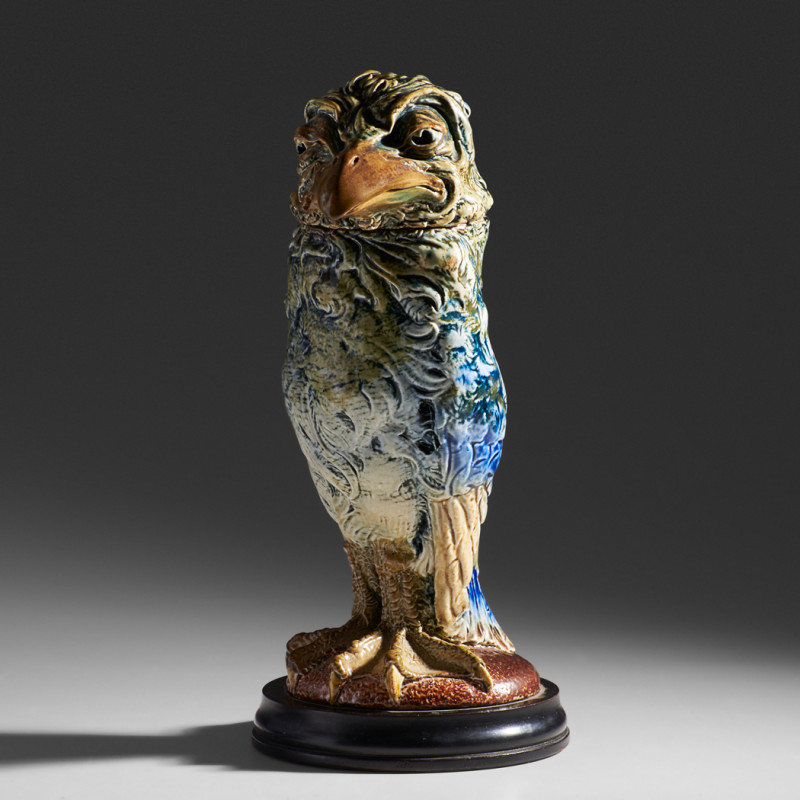
Courtesy Rago Auctions
Each of the four brothers had key roles within their studio: Robert Wallace was the self-appointed figurehead of the factory and principally responsible for sculpting; Charles ran the shop and gallery; Edwin was the principle decorator; and Walter the expert thrower.
The company was best known for its bowls, vessels decorated with sea creatures and tiles, fashioned in a whimsical but highly skillful style, but it’s the eccentric and grotesquely modeled Wally Birds, their most iconic creation, that collectors clamor for. Mischievous winks, knowing smiles, sly sideways glances, even arrogant and smug stares on these birds’ faces add to their anthropomorphic appeal. They do not represent any actual species, but generally have a large and rather fierce-looking beak, massive feet and talons, and a quizzical or disdainful look in their eyes.
Robert Wallace Martin is credited with making the birds (hence the name “Wally”), giving each one their own unique and often knowing expression.
According to the Wiener Museum of Decorative Arts, the avians were strongly influenced by Charles Darwin’s theory of evolution, and they were also often caricatures of political figures of the day. In fact, a Wally Bird that holds the world auction record is one from 1889 that resembles British prime minister Benjamin Disraeli and sold for $233,000.
The birds are coveted by collectors around the world, especially those made between 1880 and 1900 because those pieces have better modeling, detailing and expressions, according to David Rago, founder of Rago Auctions and a preeminent expert in the field of American ceramics and art pottery.
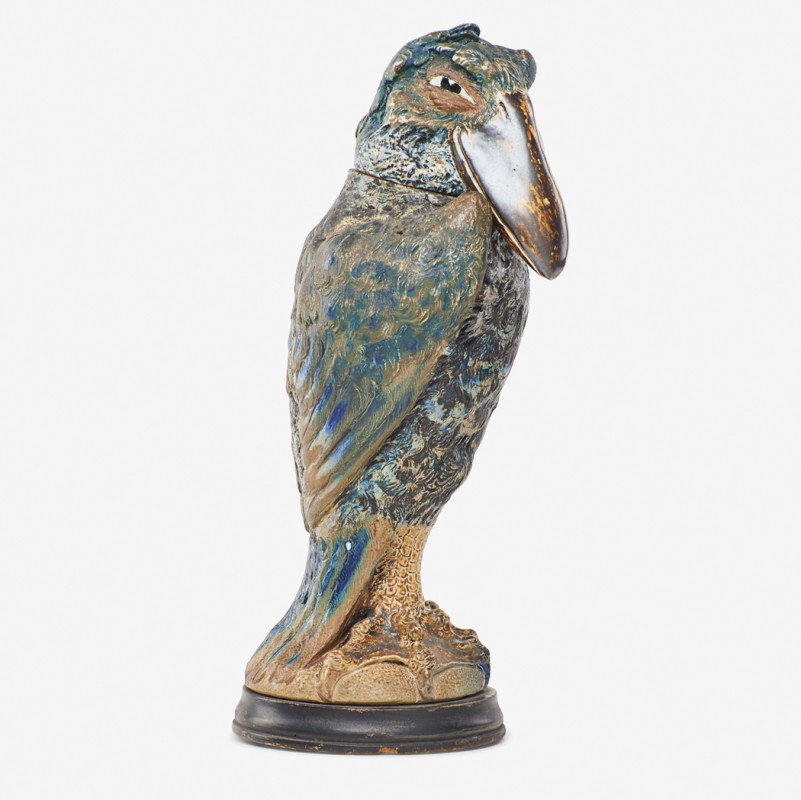
Courtesy Rago Auctions
Rago Auctions has had many birds cross its auction block, including one that sold in 2018 for $112,500. Its 2019 sale of the Andrew Furer and Elle Douglas collection that included nearly 30 well-curated pieces, mostly of bird-form humidors, represented one of the largest single-owner collections of Martin Brothers ever offered at auction and came to Rago via UK-based dealer, AD Antiques.
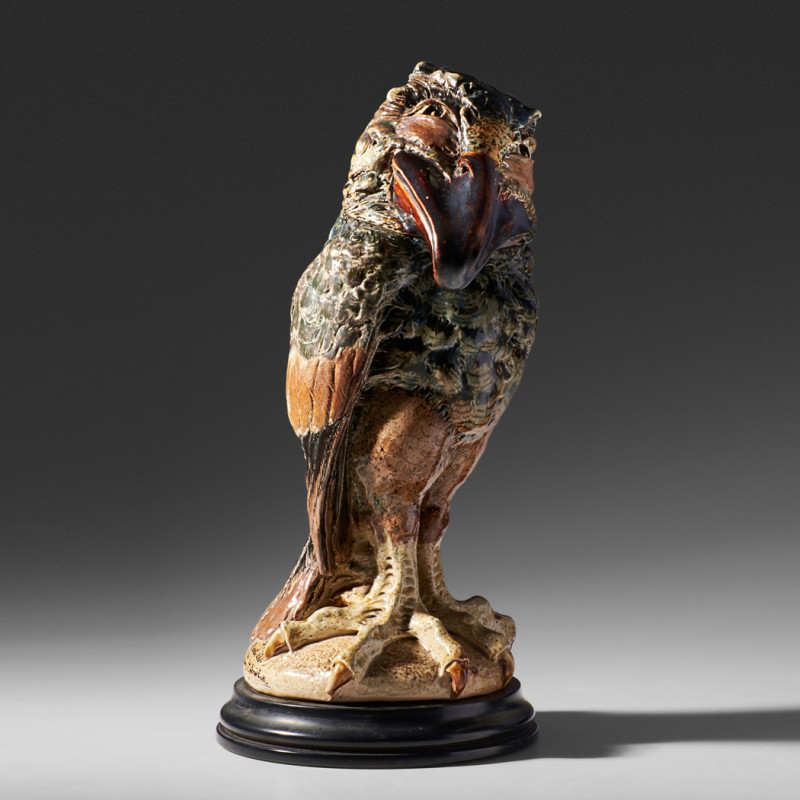
All of the birds pictured are from this sale and sold for $50,000 or more. The total sale of the bird collection brought in just under $770,000. Highlights include a tall bird tobacco jar made in 1899 which shot past the high estimate of $45,000 to sell for $62,500; two single-bird vessels that sold for $60,000 each; a tall and fine bird tobacco jar which sold for $56,250; and a small triple-bird tobacco jar, which sold for $52,500.
Rago said what makes these birds great is that the Martin Brothers “were world-class modelers, at the top of their game, with an idea no one else had. They’re really expressive creatures, and a lot of fun. It’s like they are having a conversation with each other. Expression is so much of what these things are about. They’re pretty snarky. I don’t know of any that are benign.”
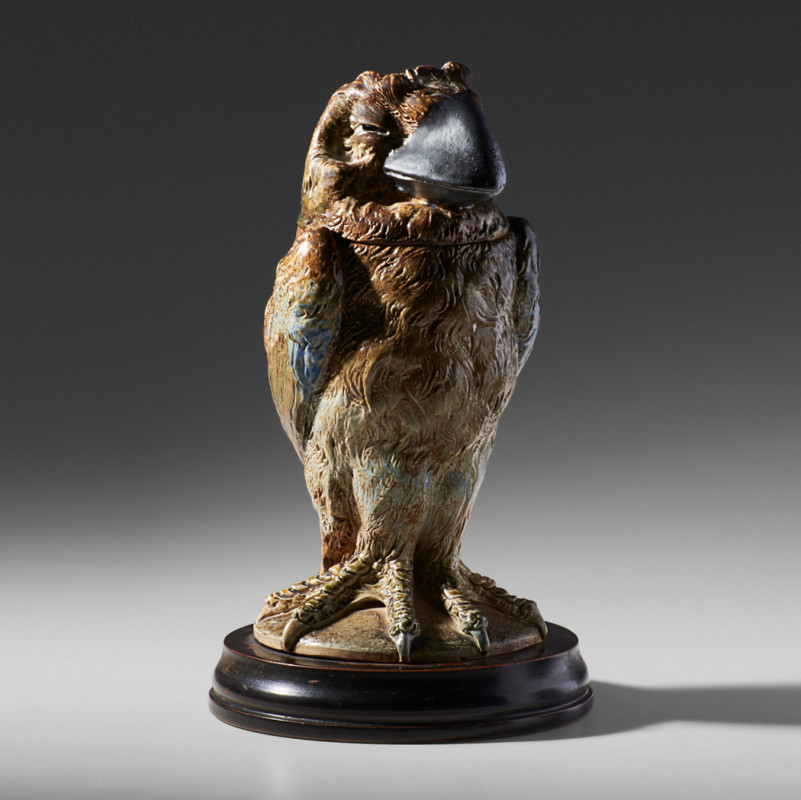
Courtesy Rago Auctions
Demand and auction prices for these eccentric stoneware avians have steadily increased on both sides of the Atlantic for decades and have proven to be solid investments.
“They’re quirky and charming,” Wade Terwilliger, co-owner of Palm Beach Modern Auctions, told LiveAuctioneers’ Auction Central News. “Rarity, craftsmanship, and the all-knowing, smirking expression of the bird form that collectors affectionately call a ‘grotesque,’ make this the number one pottery want-to-have.”
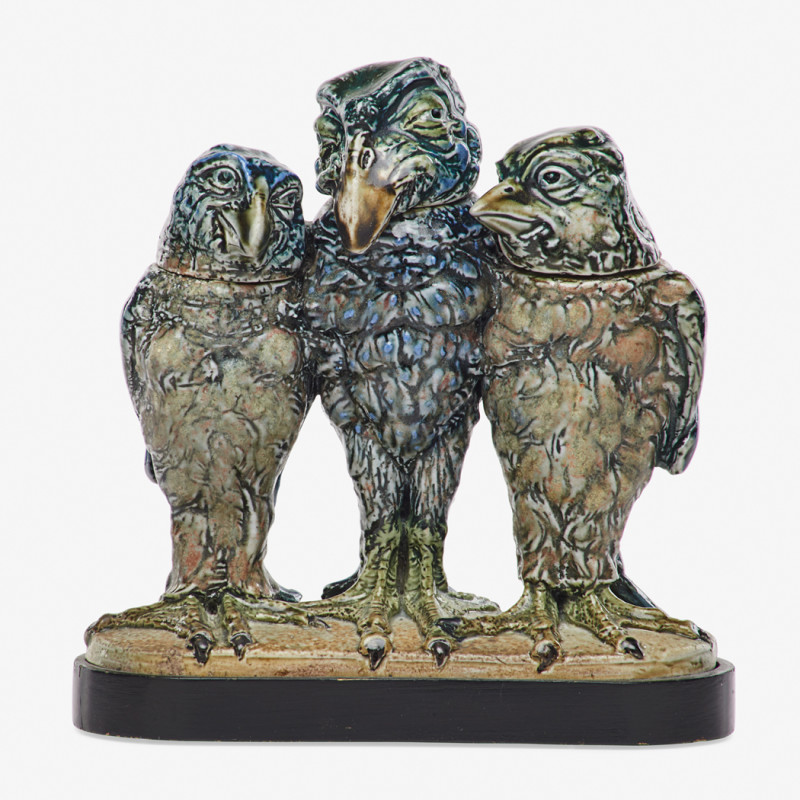
Despite their weighty price tag, “Antiques Roadshow” expert Will Farmer said that these birds are worthy investments: “In my thirty years working in the decorative arts, I have never known these items to depreciate. They keep climbing. They tick all the right boxes: rarity, scarcity, fine quality, and the craftsmanship is exquisite.”
Even if the price is too steep, we can still marvel at the birds’ enigmatically human-like expressions. Because when your value remains out of reach for most people, you can afford to look smug.
You May Also Like:
As Enslaved Artist, Dave the Potter Shaped History
Whimsical and Beautiful Weller Pottery









